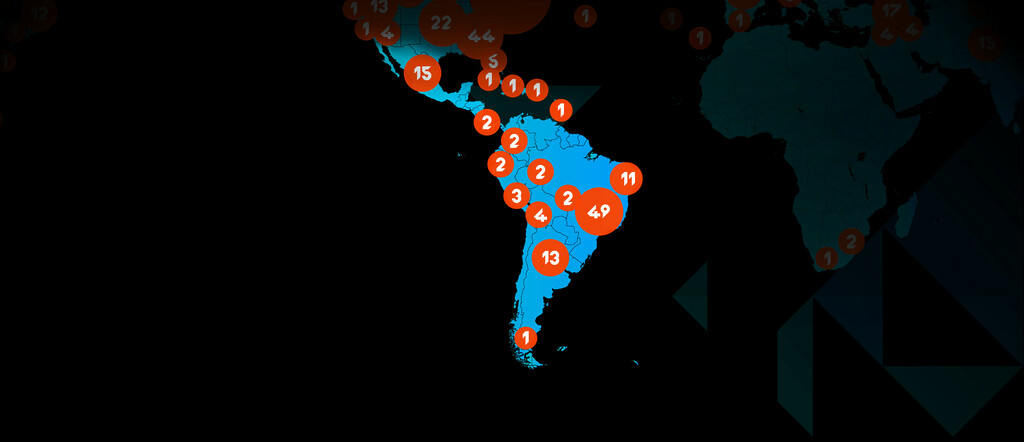
Maintain the Quality of Your Sports Rights Down to the Last Mile
During the recent SportsPro Live event in London, I started thinking about commonalities among the attendees. One of the obvious ones is our collective appreciation and respect for the value of acquired sports rights. The whole industry shares the goal of protecting and monetizing those rights in the different services and applications that we all provide.
According to Ampere Sports, the proportion of total spend on sports rights from subscription OTT services in the UK, Germany, France, Italy, and Spain will reach 20% this year, up from 12% in 2021. Most of the OTT spend share is being driven by the traditional pay-TV premium channels, as well as public and commercial broadcasters. However, increasingly, we’re seeing a new sector of OTT-only subscription services emerge.
And while the UK may seem like an outlier – just 2% of its rights are held by OTT-only service providers – all the traditional entities also have an OTT offering. Among UK sports fans with internet access, only 15% say they never watch sports via a streamed video service, while 62% stream sports weekly or more often. So, although the actual expenditure comes from other entities, the amount of OTT live-streamed sports being delivered across the network is still remarkably high and growing fast.
Maintaining the Value of OTT-delivered Sports Rights
The monetization of these new OTT channels creates unique challenges that were not common in other areas such as free-to-air or even pay-TV. These are hugely lucrative sports rights assets that need protection as they are uniquely vulnerable to streaming related performance factors. Naturally, comprehensive content security is essential for live streaming to protect sports rights and must be supported. In our view, though, as much focus is needed today on streaming quality of experience (QoE).
For example, these four QoE-related conditions can severely jeopardize the value of live streaming experiences:
- Playback failures
- Low bitrates
- Rebuffering
- Long start-up time
Just imagine you’re streaming via an OTT platform. You hit play to watch the UEFA Champions League semi-final one minute before kick-off. And then suddenly, it takes five to seven seconds to load the stream. After a while, the quality of experience could ramp up to around 1080p – but then the infamous spinning wheel might appear to indicate rebuffering. And assuming the match images do finally emerge on your expensive UHD television – imagine the frustration if the experience appears in a sub-HD resolution! These are all-too-common issues in today’s streaming services.
As a rights holder, you run a real risk of paying billions of dollars to acquire or maintain the rights, only to see consumer churn increase because of poor streaming QoE. It’s such a significant issue, potentially affecting so many viewers, that in some European countries the regulators are now involved. If streaming quality is not good enough, OTT service providers will be mandated to refund monthly fees to the subscribers.
The Qwilt Open Caching Model
Through Qwilt’s open caching model, we have a better model to help content owners protect their assets. There are two main reasons why our approach is better than traditional CDNs. The first lies in our architecture: Our POPs are very close to the edge and the end-user. Unlike a typical CDN, which has around a 20-100 millisecond latency from the nearest CDN POP to the end-user, Qwilt’s open caching approach deploys the caches deep in the service provider network, reducing the latency to just five milliseconds.
This means we can deliver a higher QoE. Our highly flexible architecture means we can respond to the latency challenges now and in the future, whether it’s a high-profile live sports event or enabling the future of the metaverse. And because our caches are very close to the end-user, at the true edge of the network, we avoid the congestion that traditional CDNs face by going through peering and exchange points and the service provider core. Our approach avoids that congestion, which can degrade streaming bitrates and the intended quality of the live stream.
We ensure uncompromised scalability – an essential element for all live events – whether a tennis match or a concert. The peering point is often the weakest point along the network path when many subscribers seek the same live content simultaneously, creating an acute bottleneck. And whether it’s the stream, video, or user authentication, this bottleneck means it’s impossible to serve all these users simultaneously. In contrast, Qwilt’s hierarchical architecture helps to prevent origin and upstream saturation by distributing the individual unicast live streams across many POPs through the network and well downstream of congestion points.
Collaborating with the Service Provider
The other important differentiation from traditional CDNs relates to our deep partnerships with service providers. Our revenue-sharing model addresses the issue that service providers would otherwise face with content providers – namely, they make the investments from which the content providers make money! We are changing that model by sharing content delivery revenues directly with service providers.
Another benefit of our approach is better traffic engineering within the network – we don’t just buy co-location or connectivity; we work with the network departments collaboratively to optimize placement and size of caches that support content delivery. Therefore we can provide higher availability and quality. Our partnership with service providers means we continually work on optimizing traffic engineering, leveraging our distributed architecture within their network to provide better resiliency.
We are very proud of our results to date – our ability to deliver high-quality live sports streams in the last mile is already proven – and we have more planned this year so stay tuned! If you’d like to hear more details about the major service providers and global streaming platforms that use our solution today, please get in touch. Live sports streaming is just one use case highlighting Qwilt’s better way to deliver content.
To learn more, watch the video from my SportsPro Live session here.
Ready to take the next step?
We have a team of content delivery experts ready to answer your questions.
Related resources

Event
SportsPro Live 2023

Event
SportsPro OTT USA 2023

News
It’s all about the CDN, stupid

Blog





